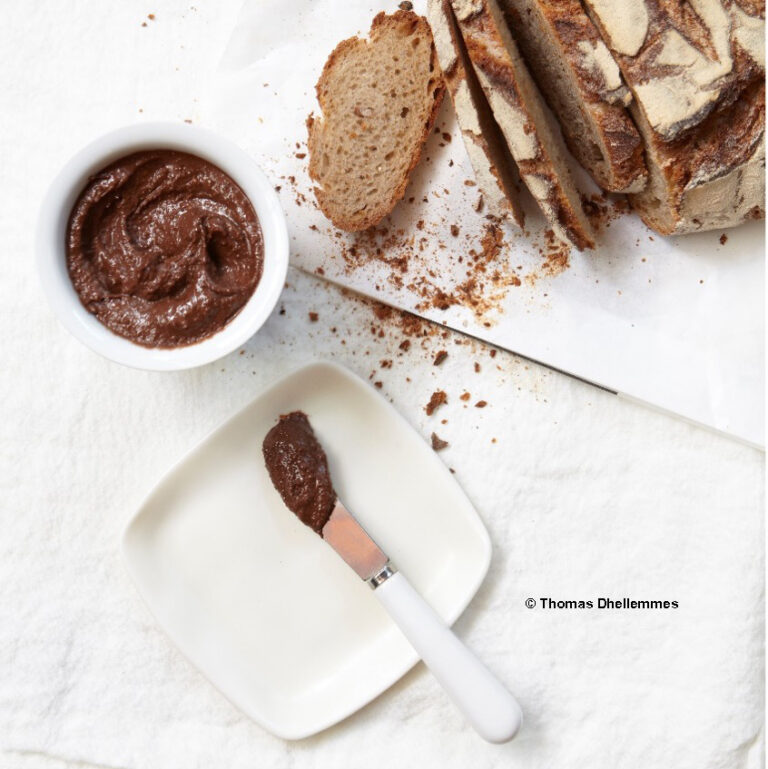But where does this tradition come from?
Its roots date back to antiquity.
Even though this dessert is associated with a religious holiday, its origins would date back to pagan times.
In Roman times, people celebrated the Saturnalia during the winter solstice. These celebrations, organised in honour of Saturn, God of Time, lasted for 7 days.
Among other festivities, there was a custom that inspired our Galette des rois:
A round, yellow cake symbolising the sun was shared with some slaves or people sentenced to death. Whoever found the hidden broad bean in the cake became “Prince of Saturnalia” and had the right to obtain whatever he wanted for a whole day.
It was also a period when masters and slaves shared their meals and where the distinctions between classes were lessened.
It was a period of real jubilation, a week breaking with the rest of the year.
We also owe to Saturnalia the tradition of asking the youngest people present to choose who will get the next slice, by going under the table.
The broad bean would have been chosen because it symbolises fertility and abundant harvests. The broad bean is the first seed to germinate at the arrival of spring.
A holiday that has lasted for ages
This tradition, which goes back to Roman Saturnalia, has continued in different regions in France, with different recipes and practices.
During the 13th and 14th centuries, Epiphany cakes (galette or brioche) were shared between the guests who were present, plus one: God’s slice, which was offered to a poor person passing through. The cakes were then called “Gâteaux de partage” (Sharing cakes).
During the 16th century, Epiphany cake became King cake, in honour of the Three Wise Men.
King Francis I of France only accorded to pastry chefs the right to commercialise this dessert. This created resentment from bakers who got round their prohibition on selling King cakes by substituting them with galettes which they offered to their clients.
Under the reign of Louis XIII, the ladies of the court who found the broad bean became “queen for a day” and could ask the king for a wish.
In 1795, not long after the French Revolution, King cake became “Galette de l’Égalité” (Equality galette). However, the Convention regime had to give it up in the face of popular protests. That is why today we still savour the Galette des rois.

The pleasure of fabophiles, the porcelain bean collectors
At the end of the 18th century, porcelain beans appeared, representing the Christ Child. During the Revolution, the Christ Child was replaced by a Phrygian cap. Broad bean seeds have been systematically replaced since 1870 (the year of the Paris Commune) by porcelain figurines, and more recently, by plastic figurines. If you are interested in history, the Élysée Palace offers every year a galette without bean, because drawing kings is not compatible with the idea of Republic. Nowadays, there are a multitude of fancy beans that makecollectors very happy. The collection of these little objects is called “fabophilia”.

A wide range of recipes
In the north of France, the frangipane galette is inspired by the Pithiviers. Some people say that the recipe for frangipane comes from the Italian Count Cesare Frangipani, who is supposed to have given the recipe that bears his name to Catherine de Medici.
In the south of France, the King cake is inspired by a brioche with candied fruits and orange blossom. In the Rhône Alpes region, there are also praline brioches that can be used as a King cake.
The common feature of all these recipes is their sweetness and their round shape, whether they are solid or crown-shaped.
The success of this dessert has not waned, with 94% of French people admitting they eat at least one in the course of the year.
Discover here a selection of galettes from Relais Desserts pastry chefs, or for the most experienced among you, some recipes shared by our pastry chefs:
https://www.relais-desserts.net/en/recette/galette-poire-chocolat
https://www.relais-desserts.net/recette/galette-des-rois-nature
https://www.relais-desserts.net/recette/galette-piemont
https://www.relais-desserts.net/recette/galette-caramel-mandarine



